Street dance refers to various kinds of dance born out of street culture since the 1960s. Street culture, in turn, signifies the common values and freewheeling lifestyle of urban youth. As those origins suggest, street dance means more than just dancing on the streets―it implies a culture that transcends spatial boundaries. Being grounded in a freedom-seeking culture, street dance has rapidly evolved with the times and forged close ties with popular culture. Street dancers improvised their movements in a kind of free-spirited musical performance, treating their bodies as an instrument. That became a recognized style that is still enjoyed today as it continues to develop in distinct subgenres such as popping, locking, breaking, waacking, freestyle hip-hop, house, krumping and dancehall.
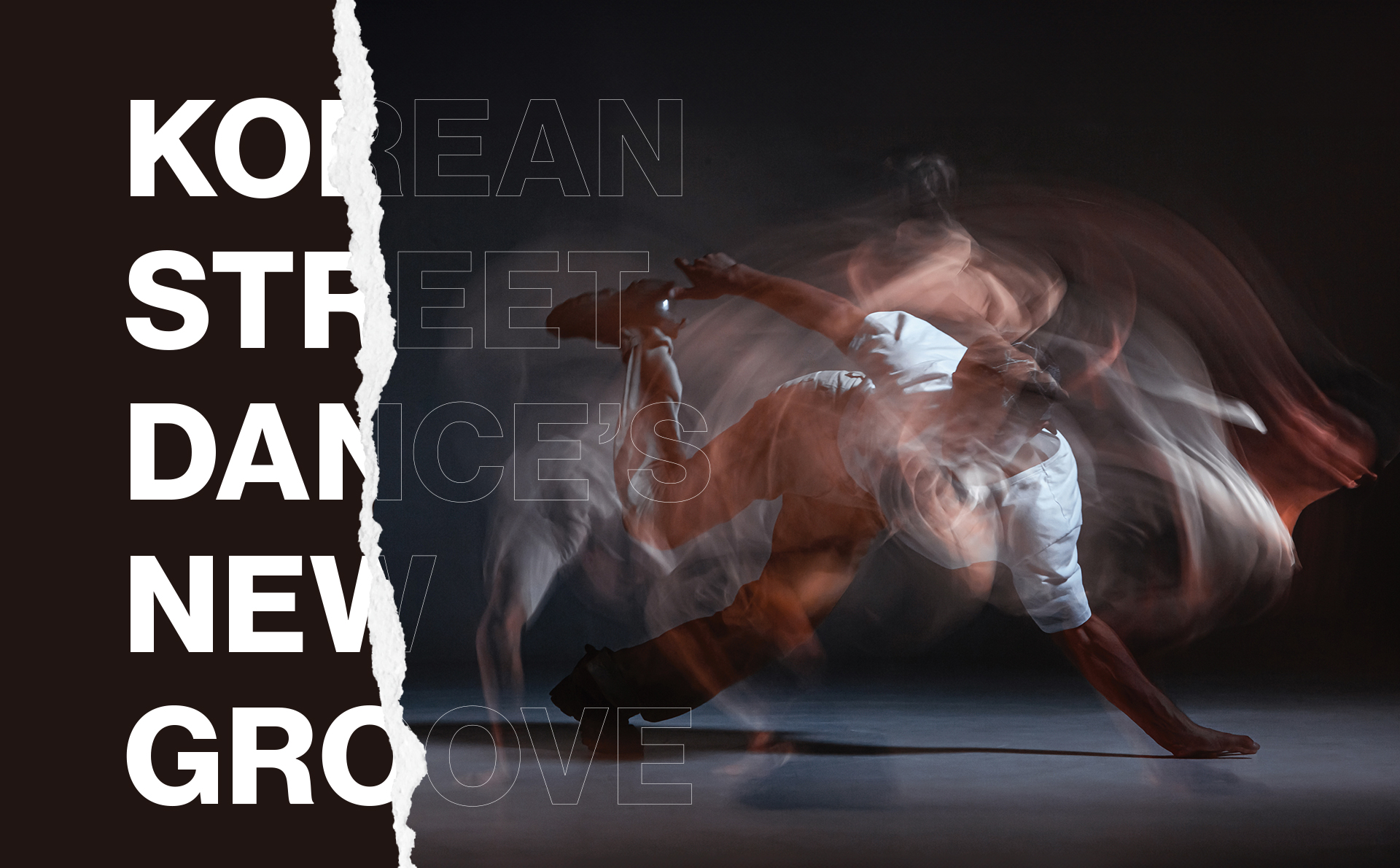
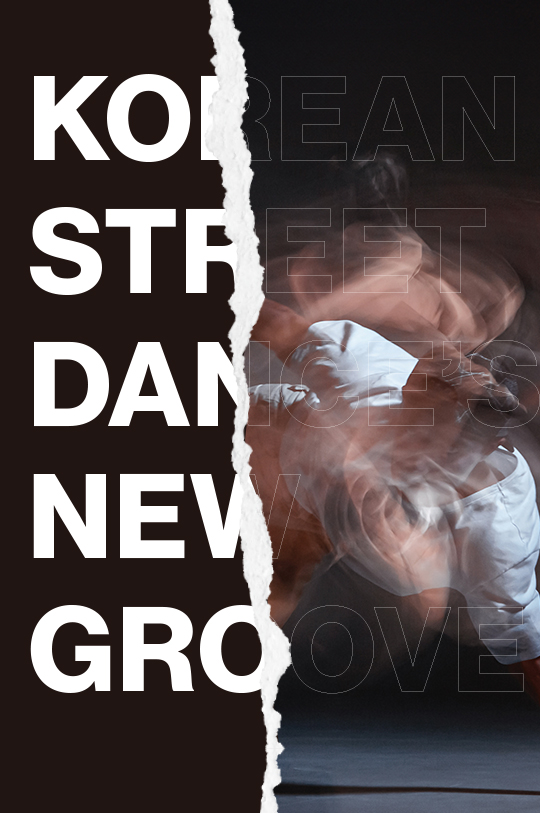
Writer. Mr.Snakewave (Park Sung Jin)
Leaders of Korean Street Dance:
The Original Generation Emerges
Street dance originated in the United States and developed in the West before rapidly spreading around the world through mass media. Korean youth began to fall in love with street dance after various films and TV programs were imported in the early and mid-1980s. It was a good fit for Koreans’ deeprooted love of dancing and singing, and its influence was soon felt in famous artists’ music and choreography.
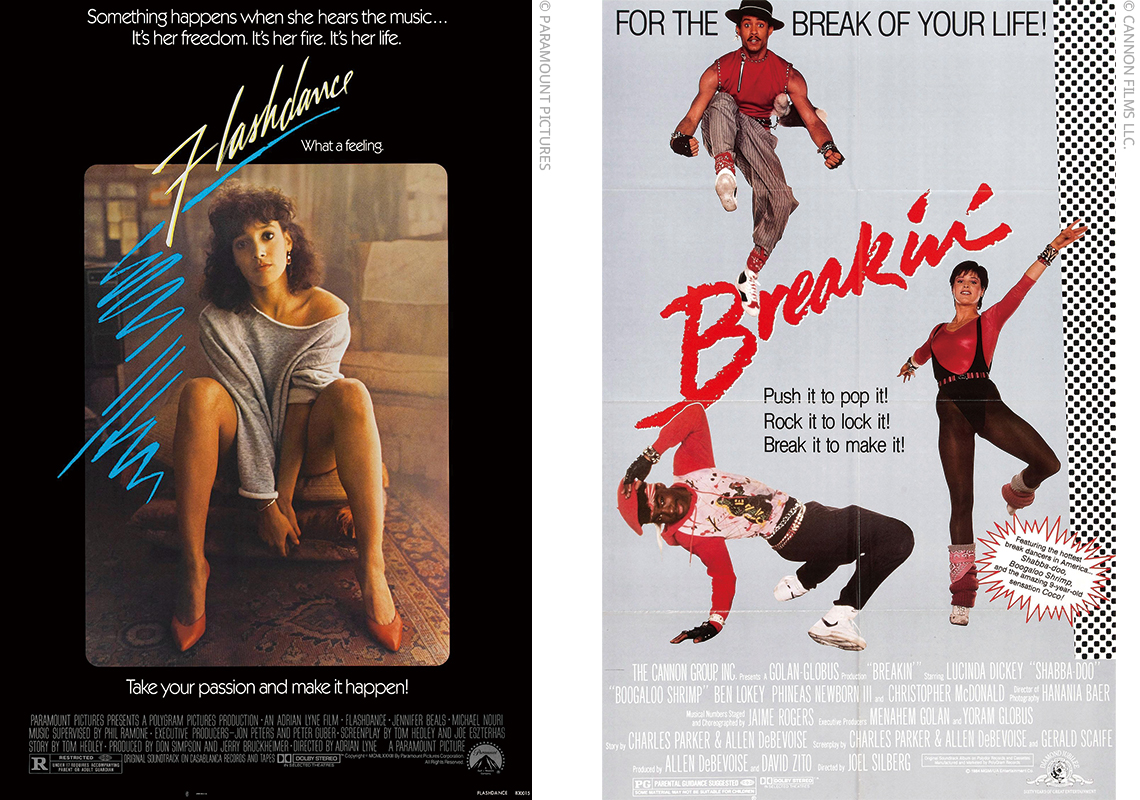 Movies that introduced the videotape generation of Korean street dance to the world of dance. Left: ‘Flashdance’ (1983), Right: ‘Breakin’’ (1984)
Movies that introduced the videotape generation of Korean street dance to the world of dance. Left: ‘Flashdance’ (1983), Right: ‘Breakin’’ (1984)
The young people who began learning these dances from videotapes became called the “videotape generation.” In a time before the Internet and YouTube, you could only dance to the moves you saw in the movies or on television. However, that approach had a number of downsides for these dancers. Relying totally on videos left out crucial information, and nobody was around to correct bad form. As a result, the videotape generation faced several challenges: lackluster technique (which is the absolute essence of dance), a disconnect between dance and music, cultural misunderstandings and physical injuries.
Korea’s videotape generation finally met the top street dancers during the 1999 World Hip-Hop Festival which was held in Korea. That drove dancers to work harder to overcome the hangups from absorbing the culture long before learning the proper techniques. Dancers went overseas to learn styles such as popping, breaking, locking and freestyle hip-hop and brought foreign dancers to Korea to lead workshops. That led to a natural transition from the videotape generation to a new generation of dancers who developed their own original style and are known in Korea as the “original generation.”
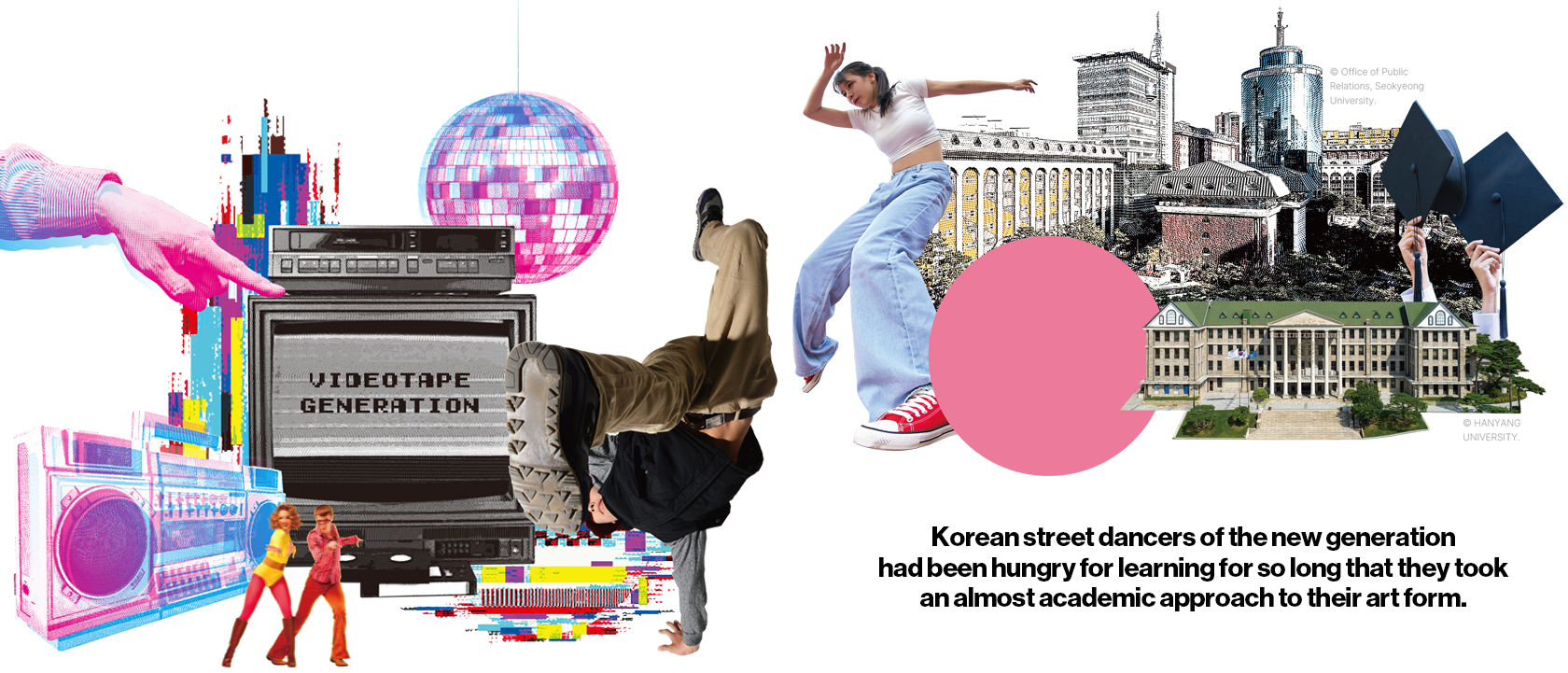
The Original Generation of K-street Dancers
The original generation of Korean street dancers was so hungry to learn that they even took an academic approach to their art form. Unsurprisingly, for a country so focused on education, Koreans created the world’s first university majors in street dance at Hanyang University, Seokyeong University and Korea National Sport University. MA and PhD programs were also set up at each of these universities, and more than 300 academic papers have been published about dance. Through these academic efforts, street dance has gained recognition in Korea as being more than just a form of recreation. Korean street dance has established itself as a high-level art form that goes beyond popular culture, a practice that many find inspirational.
Korean street dance is also a driving force behind Korean popular culture, which is perhaps best known for K-pop. For one thing, the advanced choreography showcased by K-pop artists is often itself grounded in street dance. In addition, the K-pop artists who are performing that choreography have themselves finetuned their dancing chops through street dance instruction at the big entertainment companies. That’s why many world-famous K-pop stars are regarded as outstanding street dancers in their own right.
The growth of Korean street dance has been facilitated by the academic approach, the leading role it has played in Korean popular culture, and the efforts of the original generation. That has also made Korea’s street dance scene one of the four most vibrant scenes in the world, alongside those in the United States, France and Japan. Street dance is now one of the primary cultural genres representing Korea at global events such as the Pyeongchang 2018 Olympic and Paralympic Games.
 Dancer Lia Kim performs as a special guest judge on the breaking dance battle TV program ‘Showdown.’ Courtesy of JTBC
Dancer Lia Kim performs as a special guest judge on the breaking dance battle TV program ‘Showdown.’ Courtesy of JTBC
The Future of Korean Street Dance
Even as Korean street dancers draw upon their unique national identity, they’re also working with cutting-edge extended reality (XR) technology, which includes augmented reality, virtual reality and mixed reality. The goal is to create diverse entertainment that extends beyond the physical stage. Considering how Korean street dance has grown despite numerous hardships and prejudicial attitudes, it will surely manage to keep growing and adapting to our rapidly changing society. There’s little doubt that Korean street dance will remain one of the top genres that define Korea on the global stage.
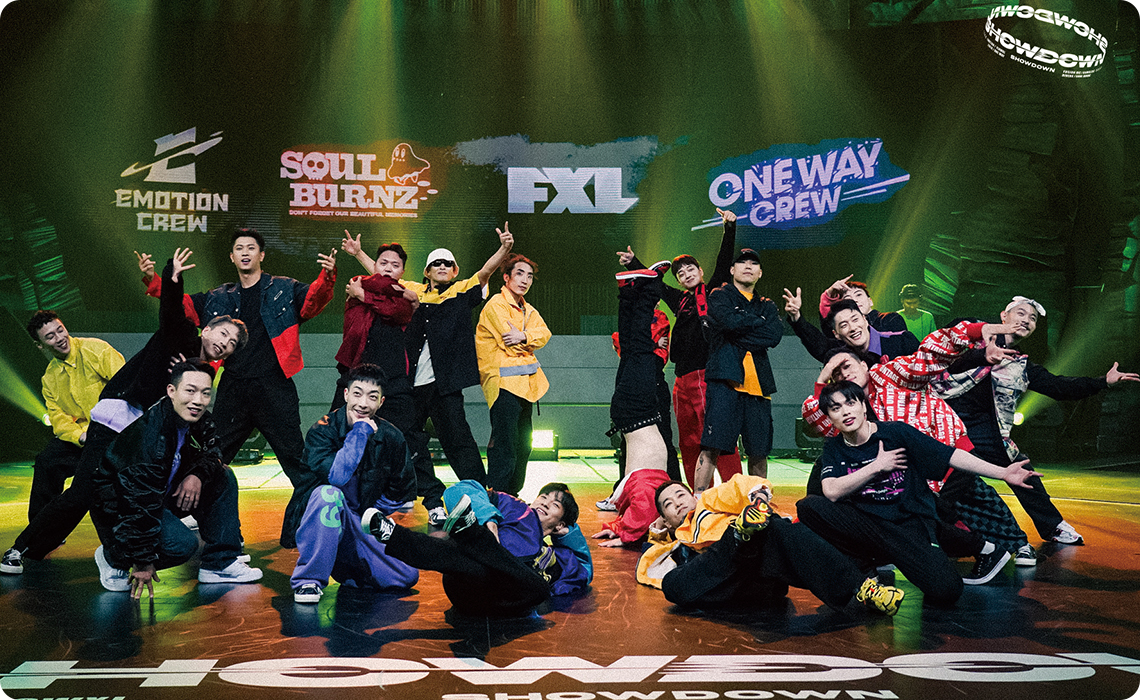 Crews participating in the breaking dance battle TV program ‘Showdown.’ Courtesy of JTBC
Crews participating in the breaking dance battle TV program ‘Showdown.’ Courtesy of JTBC
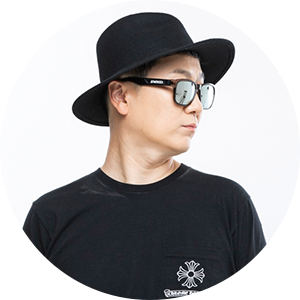
Mr. Snakewave (Park Sung Jin)
Leader of the Winners Crew
Park is the leader of the Winners Crew, one of Korea’s top street dance groups. He has paved the way for Korean street dance through his original style and relationships with foreign dancers. He’s currently a professor of commercial dance at the Department of Dance Art at Seokyeong University, where he’s working to train future scholars and raise awareness about street dance’s status as an art form. He has supervised choreography for Korean performances at major events, including the “All for One, One for All” cultural concert for UNESCO and a performance at the opening ceremony of the Pyeongchang 2018 Paralympic Games. He has also played a leading role in giving K-pop artists an educational grounding in street dance while handling dance training for K-pop artists such as Super Junior, TVXQ!, Girls’ Generation and Lee Hyo Ri with SM Entertainment and DSP Entertainment.
